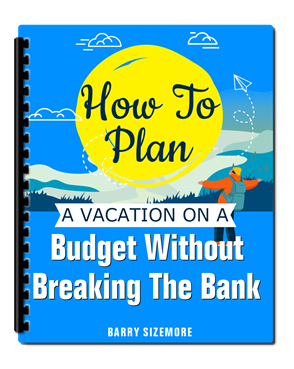Traveling with sleep apnea can present unique challenges, especially when it comes to trying to rest on a plane.
The combination of limited space, unfamiliar surroundings, and the need for specialized equipment can make quality sleep seem out of reach.
However, with the right preparation and strategies, it's entirely possible to rest comfortably and arrive at your destination feeling refreshed.
Read on for practical tips that can make sleeping on a plane with sleep apnea easier and more manageable.
1)) Choose The Right Seat For Comfort And Convenience
Investing time in selecting the right seat can greatly improve your comfort and ability to manage sleep apnea during a flight.
Aim for an aisle or window seat near the front of the plane, as these areas are typically quieter and have less foot traffic compared to other sections.
A window seat can provide a stable place to rest your head, while an aisle seat offers easier access for using your CPAP machine or similar equipment.
Consider upgrading to premium economy or business class if possible for extra legroom and recline.
Making a thoughtful seat selection ensures you're setting yourself up for a smoother and more restful flight experience.
2)) Use A Travel-Approved CPAP Machine
Having a travel-approved CPAP machine is essential for managing sleep apnea while flying, as it ensures that you can maintain your therapy without interruption.
These devices are specifically designed to be lightweight, portable, and meet airline regulations, making them ideal for air travel.
Before your trip, check with your airline to confirm their policies on medical devices and bring any necessary documentation, such as a letter from your doctor.
Many modern travel CPAP machines are equipped with battery options, which can be a lifesaver on long flights or when power outlets aren’t available.
By using a travel-approved CPAP machine, you can stay consistent with your treatment and rest easier, even at 30,000 feet.
3)) Bring Essential Sleep Apnea Accessories
Packing essential sleep apnea accessories can significantly enhance your comfort and ensure uninterrupted therapy during your flight.
Items such as a CPAP mask, headgear, and spare filters are crucial for maintaining your treatment regimen while traveling.
Don’t forget to include a universal power adapter if you're flying internationally, as well as an extension cord for flexibility in accessing outlets.
A padded travel case can help protect your equipment during transit, while sanitizing wipes make it easy to keep everything clean on the go.
With all the necessary accessories on hand, you’ll be well-prepared to manage your sleep apnea effectively and enjoy a more relaxed and restful flight.
4)) Wear Noise-Canceling Headphones Or Earplugs
Noise-canceling headphones or earplugs are invaluable tools for creating a quieter and more peaceful environment during your flight.
The constant hum of the plane’s engines, coupled with potential disturbances from passengers, can make relaxing and falling asleep much more difficult.
Noise-canceling headphones help to block out low-frequency sounds, while earplugs can reduce overall noise levels, allowing you to focus on resting.
Many designs are lightweight and comfortable, making them suitable for extended wear during long flights.
By minimizing disruptions with these simple yet effective tools, you’ll find it easier to drift off and maintain consistent sleep, even in a noisy cabin.
5)) Practice Proper Sleep Posture
Maintaining proper sleep posture is critical for achieving restful sleep on a plane, especially if you have sleep apnea.
Begin by ensuring your neck and head are well-supported with a travel pillow designed to keep your airway aligned, reducing the risk of interruptions in breathing.
Adjust your seat to a comfortable recline angle but avoid lying completely flat if it compromises your posture or causes discomfort.
If possible, elevate your legs slightly to improve circulation and reduce strain.
Wearing loose, comfortable clothing can also help you relax and maintain good posture throughout the flight.
By prioritizing proper sleep posture, you can enhance your breathing and feel more refreshed upon arrival.
6)) Stay Hydrated But Minimize Caffeine
Staying hydrated is incredibly important during a flight, especially for individuals managing sleep apnea, as dry cabin air can exacerbate symptoms and cause discomfort.
Drinking water regularly helps to combat dehydration, which can lead to fatigue and congestion, both of which interfere with restful sleep.
However, it’s equally important to minimize caffeine intake before and during your flight, as it can disrupt your ability to relax and fall asleep.
Instead choose herbal teas or water with electrolytes to maintain hydration without the stimulating effects of caffeine.
By striking a balance between staying hydrated and avoiding caffeine, you can support your body’s natural ability to rest and recover throughout the flight.
7)) Prepare For Security Checks With Medical Equipment
Navigating security checks with medical equipment can be simple and stress-free with some preparation.
Ensure that your CPAP machine and related accessories are packed in a separate, easy-to-access bag for swift inspections at the security checkpoint.
Familiarize yourself with TSA or your country’s equivalent guidelines for traveling with medical devices to avoid unnecessary delays.
Carry a doctor’s note or prescription to verify the necessity of your equipment, as this can help resolve any questions that may arise during screening.
You may request a manual inspection of your device if you’re concerned about it passing through the x-ray machine.
By being proactive and organized, you can move through security smoothly and begin your travel with peace of mind.
Conclusion
Traveling with sleep apnea requires some thoughtful preparation, but with the right strategies and tools in place, you can enjoy a comfortable and stress-free flight.
By prioritizing your health and incorporating tips such as packing essential accessories, managing noise, maintaining proper posture, staying hydrated, and preparing for security checks, you’ll be ready to manage your condition effectively while traveling.
These steps empower you to focus on the joy of your journey, knowing that you’ve done everything necessary to support restful sleep and consistent therapy throughout your trip.
Download Our Free E-book!







